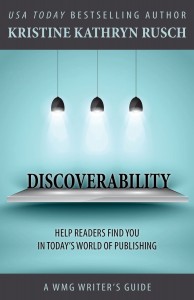 There are lots of books out there about how to market your book. Some of them are good. Some aren’t. [easyazon-link asin=”1561466190″ locale=”us”]Discoverability[/easyazon-link] is one of the best I’ve read, and I appreciate it because it looks at writing as a business, not as a way to game a system to make sales quickly. Since one of my day jobs is as a business coach, that appeals to me.
There are lots of books out there about how to market your book. Some of them are good. Some aren’t. [easyazon-link asin=”1561466190″ locale=”us”]Discoverability[/easyazon-link] is one of the best I’ve read, and I appreciate it because it looks at writing as a business, not as a way to game a system to make sales quickly. Since one of my day jobs is as a business coach, that appeals to me.
This book started as a series of blog posts, and the posts are still available. I read them last year and was excited to see she’s expanded on them and updated them for a book. In both the posts and the book, Rusch lists some assumptions to determine if the material will apply to you. I’ve worked my way through most of the assumptions, and, although the book doesn’t say it specifically, it’s obvious that meeting all of the assumptions will get you a lot of the way to being discovered.
One of the things I like about Kris Rusch and her husband, Dean Wesley Smith, is that they’ve been around for a long time and have seen how things used to be done and how the publishing model has changed. It’s ironic that, on some indie publishing forums, they are sometimes criticized for having that long view. I think it’s important to understand history and why publishers have used certain marketing strategies. As an example, Rusch discusses how the changes in books distribution have impacted the worth of “stock signings” in book stores. On the surface, it appears to be a sound marketing strategy. She talks about why it’s not.
I’ve only been publishing for a few years, but I found the history useful and relevant. It helps me to understand why things used to work and don’t now. Or why certain strategies (like having an extensive back list) will probably always work.
Time management is an area I’m particularly concerned with, and I appreciate how Rusch breaks down marketing strategies and talks about why they might (or might not) be worth the time. She’s convinced me that I’m still at a stage where most of my time should be spent writing. Since that’s what I enjoy, I’m glad to recieve validation on it.
While the content is worthy of 5 ereaders, I’m giving it 4.5 because there are some awkward places where it’s obvious she didn’t make a completely smooth transition from blog posts to books. Although most of the book won’t apply to an author who only has a few books published, I think it’s still worth reading to help map out your future. If you’re an author with an extensive back list, reading this book and implementing the strategies will certainly lead to more sales.

Rusch generously took some time away from her own writing to answer a couple of questions, so here’s a bonus interview.
TeleRead: In the chapter on author branding, you talk about the importance of good cover design and link to several examples of good branding through covers. Sometimes we learn well from bad examples. Can you share an example from your own work and why it’s bad cover branding?
Rusch: I’ll use my St. Martins covers for the Smokey Dalton series that I wrote as Kris Nelscott. St. Martins had no idea how to market these books. The covers went from adequate to awful. Here are four of the six books.
The first, A Dangerous Road, was an okay attempt. Not great, but okay for the first book in a mystery series in the 1990s. (Smoke-Filled Rooms followed this pattern).
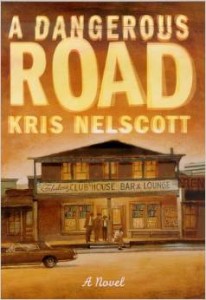
They redesigned for Thin Walls—a terrible cover:
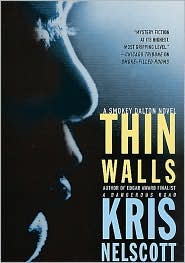
Then they redesigned for Stone Cribs, which is just awful. Those tape marks? Part of the design.
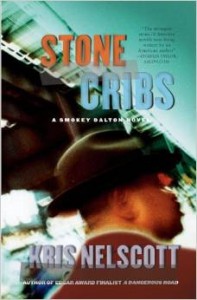
They used the same stupid tape design for War At Home.
The final St Martins book, Days of Rage, had one of the worst covers I’ve had on one of my books:

Notice there is no branding at all, and this is a mystery series. All the books should be branded. WMG Publishing has reissued them, and they’re branded now.
If you’re going to rebrand a series, then you need to rebrand all of the books, not just the latest one. And the covers should actually try to sell the books, not be cutesy. They should look good in thumbnail, and they should give the reader a sense of the book.
With the St Martins covers, there’s no way to tell if these books are about the same characters, in the same series, or in the same genre. The branding is a failure all around
TeleRead: What’s been your biggest surprise in discoverability? Either a promotion you thought would work fabulously (and didn’t) or one you tried grudgingly and it turned out to work much better than expected?
Rusch: My biggest negative surprise was a dream-come-true initially: St. Martins advertised one of the Smokey Dalton books in The New Yorker. Great ad placement right near the table of contents, and a great ad. And…there was no halo at all. No sales, no nothing, no extra orders, nothing.
My biggest discoverability surprise is the way that some review venues actually result in sales. When Analog reviews my sf work, the sales go up. That surprised me greatly, because the increase is noticeable. I think the reason is that it’s targeted marketing at its best. I’m known in the sf world, I sell stories to Analog, and the magazine’s readers use the reviews as a buying guide.
Honestly, though, I’m always pleasantly surprised when a promotion works. Everything changes so fast in marketing that there’s no guarantee, even if it worked before. That’s why copying someone else’s success rarely works the way it worked for the original.


















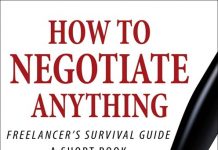

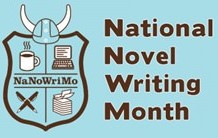













A few days ago I went to a hardware stores to buy a box cutter. On the shelves were probably four or more different brands, and I wasted a few minutes deciding which one to get. And in the end, I don’t think it a mattered – any brand would have gotten the job done. Can I say each brand of box cutter is essentially the same? I think that’s a fair assumption.
In 2008 Audible offered a free download of a first in a series science fiction novel by Rusch; it was OK, not the worst science fiction novel ever, but nothing about it made me think: “Wow! I have to hear about these characters again. I’m so impressed with the author I’m going to seek out other titles and other series by her.” It was just a book; just a story; one among millions. It filled empty time on the daily commute, but was sufficient to keep me listening. Rusch was just like the box cutter – I could have downloaded a different novel and been just as content.
It was sure nice of Audible to offer me a free book, I do like getting thing for free; but when it came time to choose an other science fiction novel, I picked a different author. I’m guessing the free offer was a marketing campaign to hook me on to her series and keep me downloading title after title after title. After reading this review, it has become a bit clearer why the tactic failed (at least for me). As a reader, I want books written with craftsmanship whether literary fiction, genre fiction, or non-fiction. When an author writes to a brand, turning art into business, they become manufacturers of objects interchangeable with a competitor’s offering. This is why I think it’s a bad idea for authors to think of themselves as a business. As a reader, I like different things, and authors who are willing to experiment and branch out in new directions.
Really, why should I read Rusch over an other science fiction author? If she spent more time crafting unique novels instead of a brand – and spending time and energy on marketing – maybe she would have written a novel that made me think: “Wow! I’ve got to read more from her!”
@Greg, why can’t an author be both a crafts person and a business person? Rusch makes the point that authors shouldn’t write to “what seems popular.” She’s against the idea of books as interchangeable widgets. However, once you’ve written a book in a new direction, if you don’t put some thought into marketing it, no one will discover it.
Authors owe it to their readers and potential readers to think about both craft and marketing. Craft will ensure readers enjoy what you write while branding and marketing gets it in front of them to read.
@Juli, I suppose it’s possible to be good at both, never say never, but from authors I’ve read who champion both writing and marketing, I’ve thought the later suffered for the former. I’ve had to sit though enough corporate meetings where the marketing department gives their spiel on the company brand will increase market share, but I’m just a programmer, and think brandong belongs to marketing, just the coding is better left to IT. Could there ever be an adman who good computer programs? Sure. But I think there is good reasons for the division of labor.
Now how necessary is marking, really? I discover more books than I can possibly read from the NYT, Washington Post, NPR, and an occasional stroll through a bookstore. Add the backlog of existing books and it becomes very hard to capture my attention, let alone getting me to read it. I can’t read them all. Is marketing or branding going to be enough to overcome those odds?
@Greg, keep in mind that I do work in the marketing field when I’m not editing TeleRead, so I do have a bias. If you look at branding and marketing as making yourself easy to find and clear about the genre you’re writing in, then yes, it will help overcome the odds. If a book is hard sci-fi and has cover art with a half-naked woman holding a laser gun, a hard sci-fi reader is unlikely to pick it up. And the reader who was looking for sci-fi romance will start it and be very disappointed. Complete branding/marketing failure. The book could be well written and innovative but never be found by the right reader. If a book is part of a series and the series covers and blurbs don’t support the series image, a reader might not read all the books in the series. Marketing failure.
Yes, some writers try to use branding as a substitute for good writing. I once picked up a book because the cover was easily one of the best, most interesting covers I’d ever seen. The book was utter crap (in my opinion), and I didn’t make it to the half-way point. However, I still remember discovering The White Dragon because of the Whelan cover. I loved the book, figured out it was the third book in a series and went back and found the others quite easily because they all had dragons on them, dragons obviously drawn by the same artist and in a similar style. I’ve read that trilogy many times and been glad that cover attracted my attention.
Good marketing may give a bad book limited success but good writing and good marketing together will give a book a good leg up. Still won’t guarantee success, but the good marketing/branding will help.